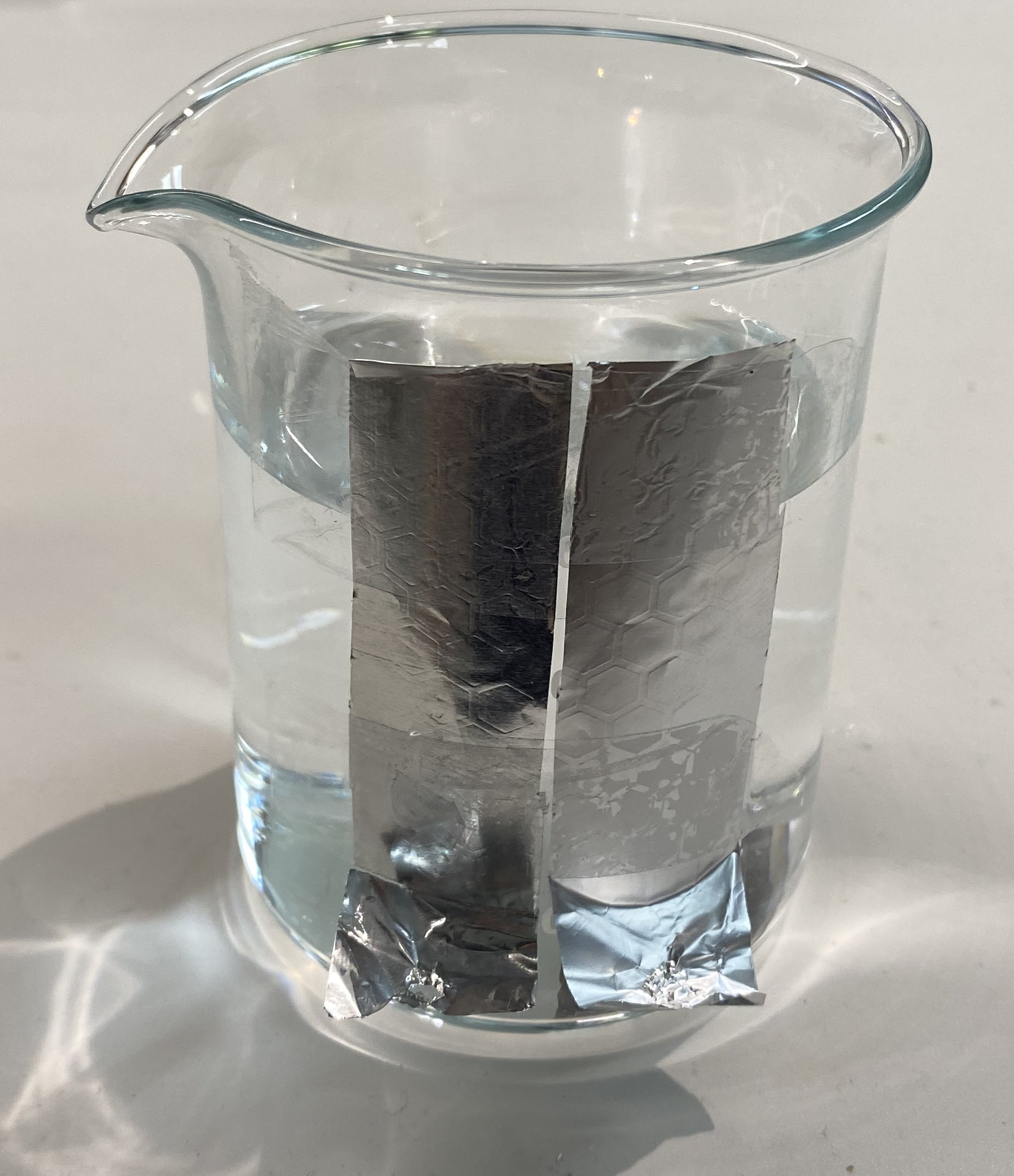EE3901/EE5901 Sensor TechnologiesPractical 3 — Capacitive sensors

In this practical, you will experiment with capacitive sensors and sources of interference in capacitive sensing.
Equipment
You will need the following equipment:
- LCR meter (or any meter capable of measuring capacitance)
- Aluminium foil or aluminium tape
- Scissors
- Sticky tape
- Glass beaker (approx 200 mL)
Introduction
You have probably used capacitors many times in your previous circuit designs. However, you probably only thought of capacitors as a pre-made component that you just buy and put into your circuit. You may not have experimented with capacitive effects beyond those pre-made parts.
Capacitive effects can introduce long-range interactions into your circuits. Sometimes these effects are used for sensing purposes, but other times they are unwanted sources of interference.
The aim of this practical is to give you a greater appreciation and understanding of capacitance.
Demonstration

Follow your tutor’s instructions to assemble the system shown in Figure 1. Experiment with moving your hands near the electrodes without touching them.
What changes do you observe on the LCR meter? Can you explain why the capacitance changes?
Capacitive sensing of water level
This activity will help you get started on Assignment 2. For the purposes of this practical, you may work in pairs. (However, your submitted assignment work must be all your own.)
Follow these steps:
- Attach aluminium tape or aluminium foil to the sides of a glass beaker, placing the strips as closely together as possible but without touching, as shown in Figure 2.

- Use an LCR meter to measure the capacitance at different water levels.
- Produce a plot of capacitance vs water level.
Assessment criteria
You will be awarded a binary mark (1 or 0) based upon completion of the task. To receive a mark of 1, you must:
- Engage in the class discussion during the demonstration activity.
- Show your capacitive water level sensor.
- Show your measured capacitance values at different water levels.
If you are not able to complete the task within the scheduled practical session, you have 7 days to complete the above items and submit evidence (photos, etc) by email to your lecturer.